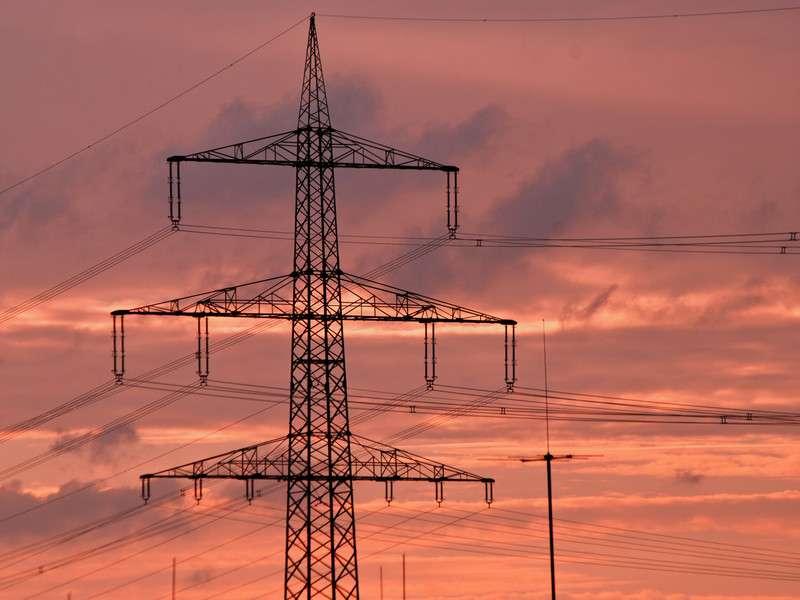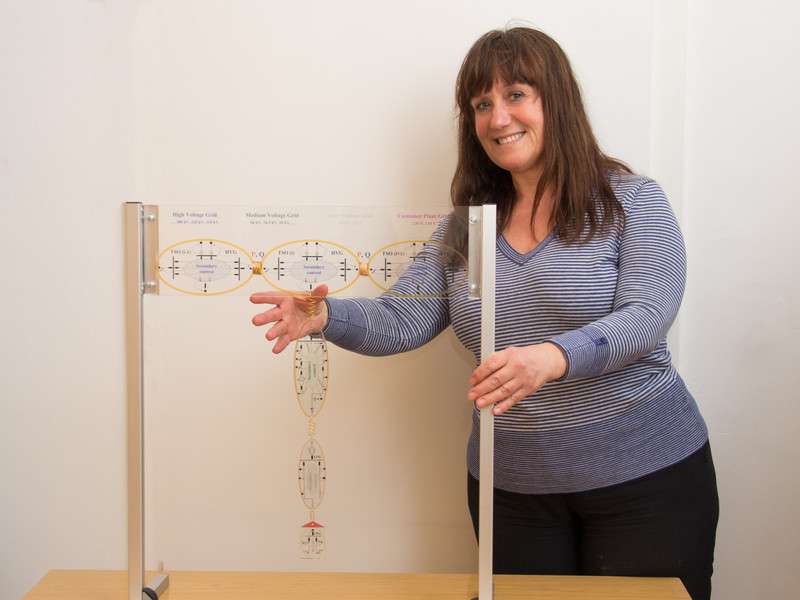Power grids need a paradigm change, say engineers

Power grids have to meet ever higher requirements, therefore we should radically reconsider the way they work. TU Wien presents "LINK", a completely new approach.
Power grids have evolved historically. Large sections of them date back to times when power distribution requirements were very different from today. In future, electricity generation will be further decentralised, with alternative energy providers feeding energy into the power grid. Electricity generation and storage will be integrated, all the way to the level of individual households. There have been various attempts to adapt power grids to these challenges but none of them solves all problems in a sustainable way.
Power engineer Albana Ilo, from the Institute for Energy Systems and Electrical Drives at TU Wien, is convinced that we shouldn't be satisfied with merely stopgap solutions. She has completely rethought the basic power grid concept, and is now able to present 'LINK', a new smart-grid paradigm aimed at making our power grid fit for the future. LINK re-organises the management of networks, electricity generation, energy storage facilities and consumers by dividing the whole system into clearly defined units ('links'), each with its own control system and clearly defined interfaces to their adjacent unit. This should result in a better, simpler and more automated electricity industry, whilst providing greater stability and solving data protection issues.
Old ideas deliver no solution
There is no doubt that we need new electricity supply solutions. "For years, we have been discussing new concepts such as virtual power plants or 'microgrids'" says Albana Ilo. Virtual power plants combine a large number of small, decentralised power generators. This allows them to compete in the market, but some technical problems remain: They cannot be controlled as easily as a large power plant, and large quantities of data have to be constantly exchanged in order to keep the system working.

Microgrids are network parts that can be thought of as quasi-independent units, in which power generation and consumption are kept more or less in balance. However, splitting the whole power grid into manageable, autonomous units is not an option. When we build large offshore wind parks at sea or huge solar power plants in the desert, it is not possible to view the power grid merely at a local level.
Physics and the market combined
The electricity market, the management of the networks and the actual physical aspects don't necessarily fit together. Physically, the power grid is divided into a high-, medium- and a low-voltage grid. There are also power stations, storages and consumers to add to the mix. Albana Ilo thinks that the management of the power grids should be divided along precisely these lines.
The individual elements in her LINK paradigm fit together like links in a chain that can be combined and connected as requirements dictate. In Ilo's concept, a high-voltage grid – Austria's for example – will be managed separately, based on a physical model. Using clearly defined interfaces, it communicates with neighbouring high-voltage grids and the subordinate medium-voltage grids. This system of linked elements continues right down to household level. Each 'link' receives input from its neighbouring elements and then decides which actions need to be taken. This means it will not be necessary to send large volumes of data to a central coordinating centre.
"With regard to data protection, it's a huge advantage", emphasises Albana Ilo. "Nobody would want utility companies to be able to collect data about individual devices being switched on and off in their own house. In our LINK paradigm, this is no longer necessary." Each link shares only a small set of absolutely necessary electrical data with the neighbouring units, the rest of the information is used only locally. The danger of cyber-attacks from outside is thereby reduced drastically.
Power flow control
LINK leads to a new kind of power grid operation, which is consistent with physical aspects of the power grid. "Today, electricity can be sold from the North Sea to Italy. Physically, however, the electricity might flow via the Polish grid, which can become overloaded - although the country is not even involved in the deal", explains Ilo. In a LINK system, this would be easy to manage. The individual high-voltage LINKs would automatically adjust all parameters so that such transactions could be carried out smoothly. The risk of major blackouts would be eliminated.
Instead of making further small adjustments and implementing emergency solutions, complicating an already outdated power grid system, LINK could be a clean, fresh start across the whole system. After many years of research in industry and academia, Albana Ilo is convinced that this is the only way for the large scale integration of decentralised energy resources into a secure and stable power grid. A resilient, self-regulating operating system would also minimise the need to expand the network: "The European power grids still have capacities", explains Albana Ilo. "We just need to make the most of this."
A small-scale pilot project in a test region in Salzburg has already shown that the concept works. A gradual transition from the current system to the LINK paradigm would be possible. "It's not an overnight process, or even something can be achieved in just a couple of years," says Albana Ilo. "However, the transition to a smart power grid is possible, and if we take the move to "Energiewende" seriously, we should start now."
Provided by Vienna University of Technology



















